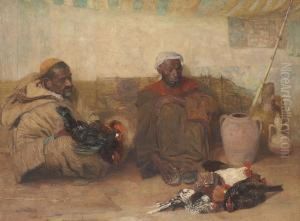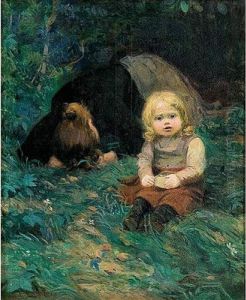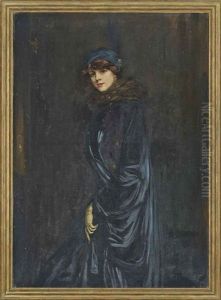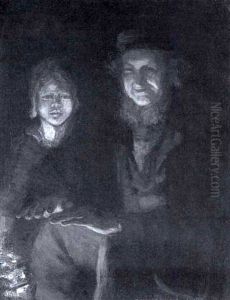Robert Lea Maccameron Paintings
Robert Lea MacCameron was an American painter known for his portraits and genre scenes. Born in Chicago in 1866, MacCameron displayed an early interest in art and pursued his passion through education at the School of the Art Institute of Chicago. His talents were evident, and he sought to refine them further by traveling to Paris, which was the center of the art world at the time. In Paris, he studied at the Académie Julian under prominent instructors such as Jean-Paul Laurens and Benjamin Constant, which was a common path for many American artists who were looking to gain the sophisticated European training that was highly regarded in the late 19th and early 20th centuries.
MacCameron's work was heavily influenced by his time in Europe. He developed a style that reflected the academic traditions of his teachers, yet he also absorbed the influences of Impressionism and Realism, which were prevalent in the art circles of Paris. His proficiency in painting was recognized, and he began to exhibit his works at the Paris Salon, earning medals and commendations for his portraits. Notable among his oeuvre are his portraits of prominent personalities of his time, including a famous depiction of the writer Oscar Wilde.
Despite his success in Europe, MacCameron maintained strong ties to the United States. He was a member of the National Academy of Design in New York and also exhibited his work at the Pennsylvania Academy of the Fine Arts. His paintings were well received in America, and he gained a reputation for his insightful and often intimate portrayals of his subjects.
Robert Lea MacCameron's career was unfortunately cut short when he died in 1913 at the age of 47. His legacy, though not as widely known as some of his contemporaries, is preserved through the works he left behind, which continue to be studied and appreciated for their technical skill and the unique blend of American sensibility with European artistic traditions.



